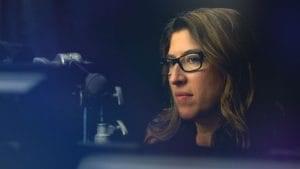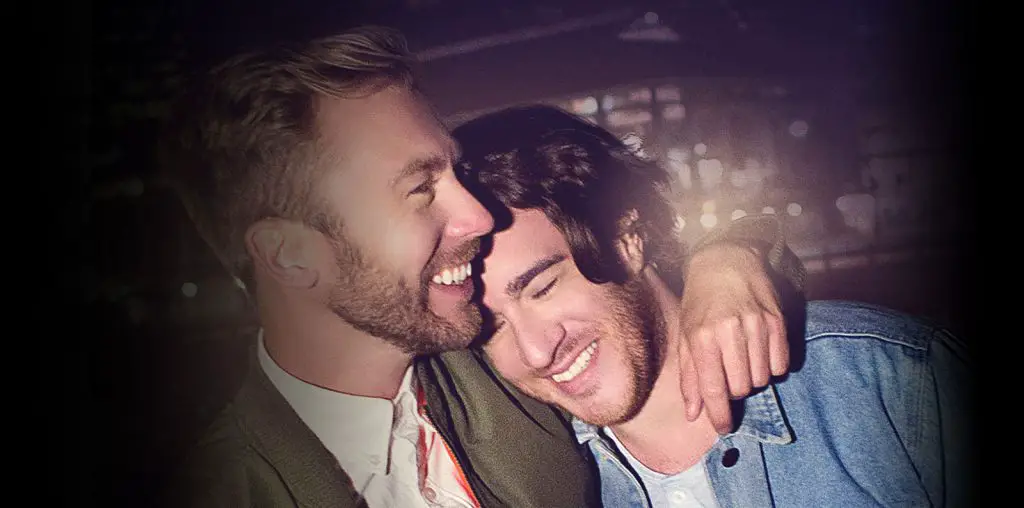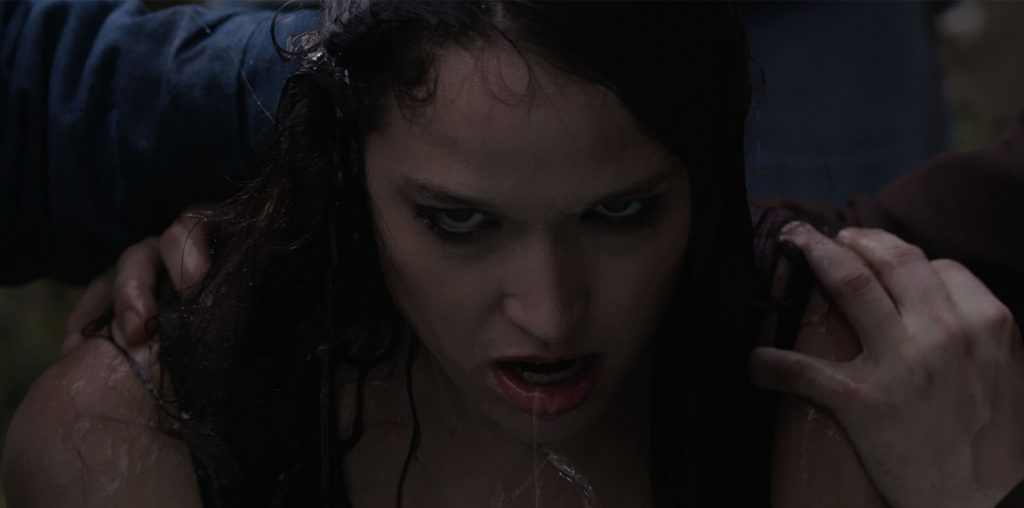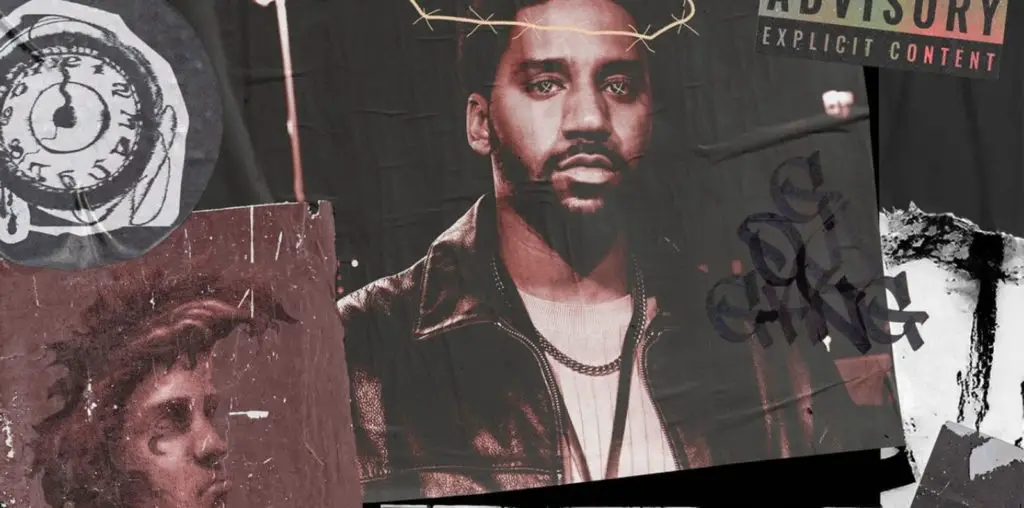
Becoming one of the most renowned professionals in your field is usually the apex of your career. But for Lauren Greenfield, her world-renowned photography was kind of just a stepping stone toward filmmaking: “I was rejected by every film school. And then I got the National Geographic internship, and my boyfriend then, who became my husband, said “do your photography. If you do that, through that you can do anything.” She did do that, and now she’s making films exactly how she wants to. Her first feature-length film, Queen of Versailles, won the award for Best Director at Sundance 2012. Her second documentary, Generation Wealth, premiered at Sundance 2018.
Generation Wealth is a career-spanning documentary reflecting on wealth through the lens of Greenfield’s photographic career. She revisits her past work’s most compelling characters and eventually turns the lens on herself with a sense of humility that makes the film beautifully human rather than contemptuous or accusatory. Greenfield is also brilliantly eloquent, and she generously sat down with me at the Media Center to share some background on her process and everything that went into this goliath documentary.

Have you always been documenting your work in video too?
No, I’ve always been doing interviews with my subjects, so even in my earliest work, I was doing interviews. And when I did my first book, Fast Forward, which starts in the ’90s, I was doing audio recordings. So it was actually really fun for this because they were not necessarily good quality. Like, I never thought I would use them for anything more than a book, so I’d be on a [loud] schoolyard or whatever, but we worked with really great sound people to kind of bring them out. And there was so much expression in them that was kind of missed in the books, where they’re just written, like, when you hear the kids’ voices, and the crazy thing was, there was just so much of it in the finished film. There’s just tiny pieces, but really there was so much material. So that’s, in a way, what was the huge challenge. There was over 500 hours of footage.
I started making my first film in 2004. Ever since then, when I was doing interviews with subjects, I was videotaping them. So there were a bunch of old things that I had made, and then for this movie, I went back and found a lot of people and caught up with them and did new material.
At what point did you know that this would be its own film, like a career-spanning film?
Like, two years ago was really when I committed to the feature-length film. It was something that Frank, my producer and husband, was kind of pushing me to do, and I didn’t want to because it was such a challenge. It was an essay film. I wasn’t ready to make a personal film.
I thinking about the project in 2008, at the time of the financial crisis, and thinking about this bigger wealth project and bringing together the work in a different way and what the financial crisis meant for me. It was very symbolic. Like, it made everything kind of into a morality tale about the pain and the consequence from the greed and the way we had been living.
But it wasn’t until basically 2012 I started working full-time on it, but first as a book, just putting together the pictures and the interviews. And it wasn’t until I really almost finished that and figured out what that story was that I realized I wanted to make a movie and go back to some of the characters and kind of think about it in a different way. But in the end, the movie was kind of its own thing, ’cause as you saw, it became very personal and it became not just about the work.

“…we had scene cards, except they were for characters, and there were like 500 of them on the wall.”
One of the things that really stood out to me is–this isn’t what most people would’ve done when translating their career work. You don’t normally turn it on yourself, and it made it so much more humble, comparing yourself to these people in the way that you are also addicted to something, your work, and that your children are potentially facing similar consequences, I thought that was incredible. How did you realize that was the way to go?
Well, when I decided to make the film, I thought my journey would be a part of it, but more as narrator, like, as the person going it, because I realized there were so many stories. The thing that’s really challenging about Generation Wealth for a film is that I had hundreds of characters. And so I realized that I needed to be this connective thread. And at that point I didn’t know that there were gonna be just a small number of characters that would really rise to the surface for the movie.
I really did not wanna be in it for the longest time. And I was working with an editor, Aaron Wickenden, who had made movies about other artists, like Vivian Maier. And he would put me in and I’d be like, “No, no, no, this is not – you’re not making a film about a dead artist. Like, this is not a film about an artist; it’s a film by an artist.” So I resisted it for a while. But then I decided I wanted to interview my parents and my kids, thinking about this idea of generation, and also ’cause the idea of generation was coming up with the other characters.
So I was gonna do interviews, but not about our relationship or anything like that. It was just gonna be about the difference between their upbringing and mine, and also their memories of my upbringing, because I did really feel like the original work from Fast Forward was very connected to my kind of growing up on the other side of the tracks and being with a lot of rich kids and feeling like being immersed in this world of wealth and seeing it, in a way.
But my mom – I was gonna interview my mom, and she was so nervous for the interview that she ended up going to the hospital with heart palpitations. And so then I had no subject. And then I asked my son if I could do a second interview with him. And I just started asking him about – because I had been immersed in all these characters, talking about addiction and the hole or the trauma, which I think becomes behind addiction, that you use to kind of numb that pain.

“We ended up cutting for 30 months.”
And I’d been spending a lot of time with Florian Homm, who talked about the cost of his ambitions and also making money and the cost it had on his family. So I just started talking with Noah about that, and I don’t wanna be a spoiler, but when he talked about how my work had affected him, I’d never heard him say it like that.
At first I didn’t think it was part of the movie, and then it kind of developed. And I guess I felt like I’ve been going into people’s lives in a very deep way for 25 years, especially in the movies, like in Thin and Queen of Versailles. I’m in the bathrooms with people when they’re changing clothes or binging or purging or very intimate situations, and I feel really privileged to have that trust and to be able to tell those stories. But I also kinda felt like I have to be willing to turn it on myself in the same way. Like, if I had to have makeup on when the camera [was on], how can I ask people to expose themselves?
So I guess it just seemed like that time. But it really developed, and it was a really, really long edit. We ended up cutting for 30 months. And I think that was why it really evolved and kind of took on a life of its own, and I really live for the unexpected happening in the moment. Like, that’s what I love in photography. That’s what I loved about Queen of Versailles. I like the change.
And in a way, making this, going through my work, I was putting it together, but it wasn’t happening in the moment, but then things started happening in the moment, particularly with the characters I went back to and then with my own story. And so I felt like that was what, you know, was kinda needed to give it that excitement, honesty, and authenticity.

Did you say you edited for 30 months? That’s a crazy amount of time.
Yes. Yeah. A lot to go through.
What was the process? Like, what went into it that made it take that long?
Well, I think because the movie really evolved in the cutting room. Like, when I started, I didn’t know what it was gonna be. A lot of what I shot, both of my own family but also of Cathy and Kacey Jordan and Florian, a lot of it I was shooting while we were already editing. And then something would happen and would lead to something else, and then new footage would come in. So it was a really interactive process between the cutting and the writing and the shooting of the new footage. It’s a very complicated film. There wasn’t really a mold that I was following. I’ve never seen a film that did this. I was trying to combine essay with my own essay, with historical essay, with character-driven stories, which I felt were really the human heart of the stories, with a personal film, which I didn’t even know I was making in the beginning.
So it was kind of like this mosaic and a process of pulling things out, pulling things out, rewriting, rewriting, rewriting, rewriting. And I tried a lot of things to see how to tell the story. Like, there was no formula.
I interviewed a lot of experts that I really respected, and in the end I felt like the only person who ended up in the movie was Chris Hedges, and all the others ended up on the cutting-room floor, because I felt like it needed to be more personal. My way of looking at economics and sociology and psychology is through characters. And so the experts helped develop my ideas. But in the end I felt like it was off-putting for an audience to have a distanced voice of the expert.

“…she was so nervous for the interview that she ended up going to the hospital with heart palpitations.”
How did you narrow down all the characters from your thousands of possibilities?
Aaron Wickenden, the editor that I worked with for the longest time, he describes when we first started, and – you know how people do scene cards on a wall? Well, we had scene cards, except for they were characters, and there were like 500 of them on the wall, with no scenes, just names. And he was just like, “Holy hell, what have I gotten into?”
We looked at a lot of footage, my first cut was four and a half hours – there were a lot more people in it. But in the end it was the people that I decided to really go back and film with whose stories were really surprising, really stunning, had these kind of turns that really played out the ideas and the consequences of Generation Wealth.
It struck me that you, in some sense, are the foremost expert in wealth. Are you involved in any kind of academic or–do you write, or are you involved in this kind of thinking beyond [photography and filmmaking]?
I mean not from a theoretical point of view, but I did do a book this year called Generation Wealth that has a huge amount of writing in it. A lot of the writing is actually the characters’ interviews. I wrote an introduction, and I elicited the help of an economist who’s really influenced me, Juliet Schor. This exhibition is going to the Nobel Peace Center next. There’s gonna be talks about economics and sociology. But I more like to do work that inspires that dialogue. I really try not to be the expert, because I feel like I’m more the documentarian, the narrator of these experiences. I wanna catalyze a dialogue about the issues.

“…if I had to have makeup on when the camera was on, how can I ask people to expose themselves?”
I would just think that professors would call you all the time–does that happen?
I think that there are a lot of teachers who use the work in schools. And I love that because when I was in school, I started studying social studies and I moved to photography and filmmaking because I felt like real people was the way to look at these ideas. And so I love it when schools use the work, and in all of my work we’ve often done educational curriculums. This one was hard because I felt like I had to really show things like it is, and so there’s some material in the movie that is really, really tough and not for kids. But I felt like that’s what’s in the culture, and I could not soft-pedal any of that.
Do you know what your next project is?
I do. I am making another documentary – but I can’t say what it is yet.
Generation Wealth played in the Doc Premieres Section at Sundance 2018.


